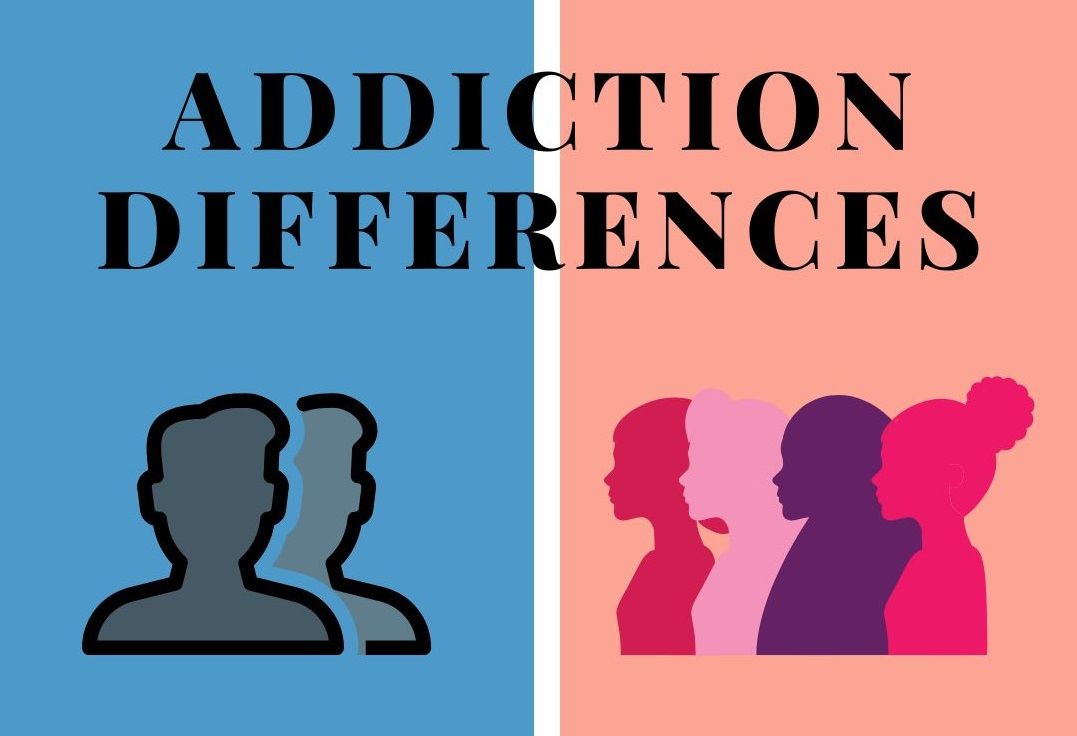What Are the Differences in Addiction Between Women and Men?
Addiction affects each individual person differently, dependent on a variety of circumstances and factors, including but not limited to, family history, environment, mental health issues, or even genetics! This week on the New Leaf Recovery blog, we’re unpicking the relationship between gender and addiction. How exactly is addiction different between men and women, and why?
What do we know so far about this factor and how does it affect each stage of addiction? Is one gender more susceptible than the other, might symptoms present differently, and what does this mean for maintaining long-term recovery? Let’s find out.

A History of Gender Bias in Addiction Research
It’s important to note that until the 1990s, key scientific research on addiction, as well as other fields of testing, were only conducted on men. This means that there is an intrinsic male bias to the research available and that decades of findings are in fact only tailored to 50% of the population. Therefore, massively limiting knowledge regarding the issues women specifically face in addiction, treatment, and ongoing recovery.
This all changed when the importance of including women in these vital studies was emphasised and then required. After this shift, research started to uncover key differences between these two groups, although there was a lot of catching up to do.
These differences vary in terms of how men and women respond to addiction at each stage due to both biological factors as well as social and cultural circumstances. Both genders experience their own specific challenges, but understanding these key differences and implementing tailored changes to treatment programmes is essential to maintaining long-term addiction recovery.
Addiction, Women, and Societal Stigma
- Women with substance use conditions often experience higher levels of guilt and shame than men.
- Gender-specific roles, such as caregiving, may contribute to these feelings.
- Women are more stigmatized for their substance use, which can impact their treatment and recovery.
- Many women with addiction have a parent who also struggled with substance use, indicating a possible genetic or environmental factor.
- Society and relationship dynamics, such as childcare responsibilities, can also impact addiction in women.
- Biological differences between men and women, such as testosterone and oestrogen production, menstrual cycles, and body size, can cause substances to affect women differently on a daily basis.
Critical Differences for Men and Women at Each Stage of Addiction
Addiction is often considered to contain several key “phases”, with each stage presenting its own unique circumstances, challenges, and gendered differences. According to Harvard Medical School, the notable differences in addiction between women and men tend to focus on the following:
- Susceptibility to initial consumption/ action.
- Active addiction, including escalation and maintenance.
- Recovery, including withdrawal and abstinence.
- Risk of Relapse.
Susceptibility
For men, initial susceptibility to addiction is influenced quite heavily by social factors, such as feeling required to engage in behaviours to belong within a group. However, for women, addiction is more likely to stem from prescribed drugs, such as painkillers, or self-medication. Generally, men are considered to be more likely to become addicted.
Active Addiction
In terms of escalation, generally, women tend to escalate and become addicted more quickly than men. With maintenance, men tend to stabilise at a lower dosage and don’t tend to experience or suffer the negative side effects of addiction to the same degree as women.
Recovery + Abstinence
When choosing to recover from addiction, certain substances may have different effects on each gender. While men tend to experience more negative withdrawal symptoms from alcohol, whereas women instead tend to suffer more from nicotine withdrawal. There are also differences in how men and women both access and react to addiction treatment and recovery.
Risk of Relapse
Once in active recovery, men usually abstain from their addiction for longer than women, with women considered to be more susceptible to an increased risk of relapse. Some possible factors that may contribute to higher relapse rates in women include:
- Higher levels of stress and emotional dysregulation, which can make it more challenging to maintain sobriety.
- Greater exposure to triggers and stressors, such as relationship problems and family responsibilities.
- More negative social and cultural attitudes toward women with addiction, which can lead to feelings of isolation and shame.
- Differences in biological factors, such as hormones and metabolism, which can affect how substances are processed by the body and the brain.
However, it's important to note that addiction and relapse are highly individual experiences, and many women are able to achieve and maintain long-term recovery. Effective treatment approaches, including gender-responsive and trauma-informed care, can help women overcome the unique challenges they may face in the recovery process. Contact New Leaf Recovery today to begin the recovery process, regardless of your gender.

